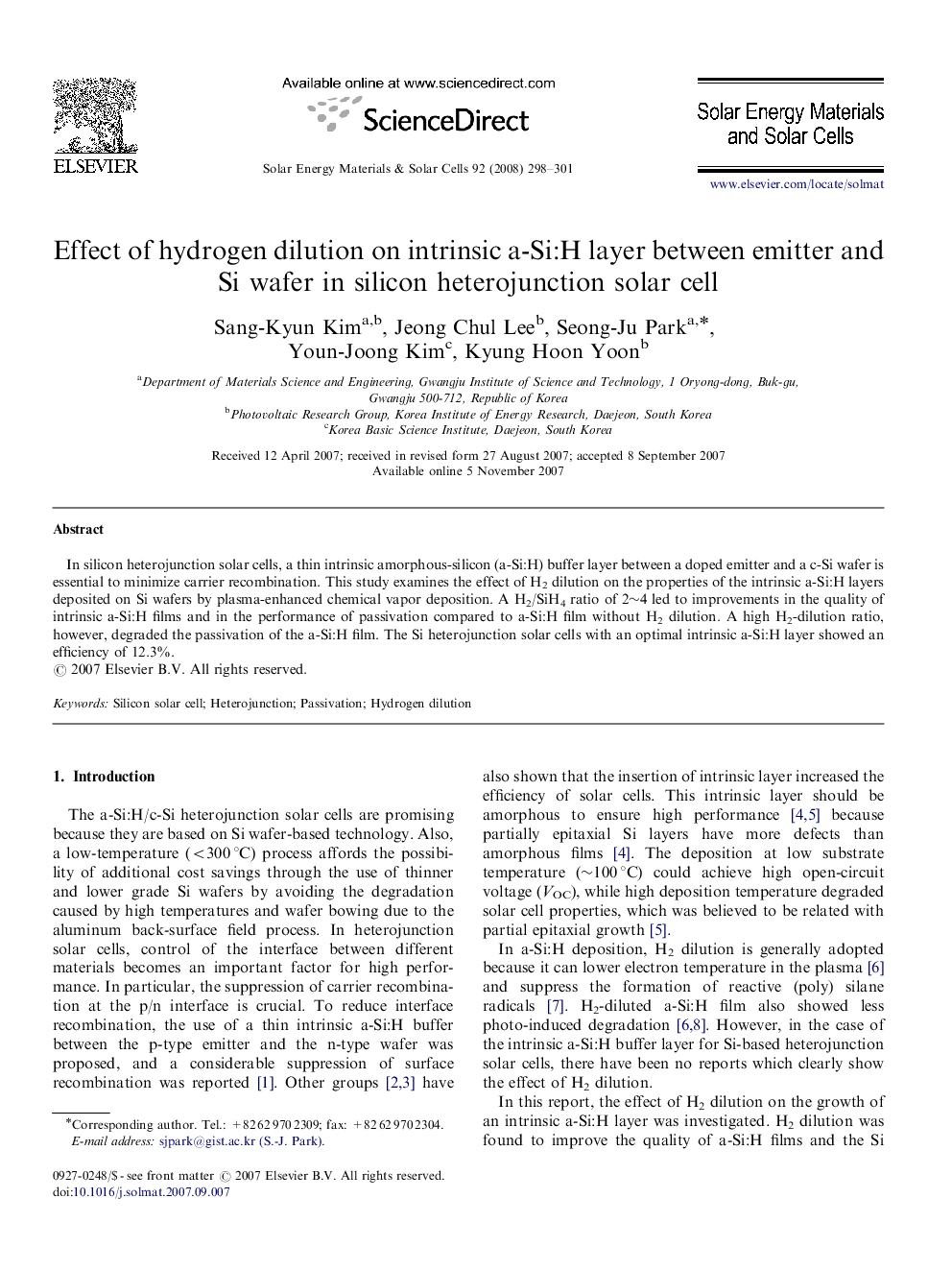| Article ID | Journal | Published Year | Pages | File Type |
|---|---|---|---|---|
| 80875 | Solar Energy Materials and Solar Cells | 2008 | 4 Pages |
Abstract
In silicon heterojunction solar cells, a thin intrinsic amorphous-silicon (a-Si:H) buffer layer between a doped emitter and a c-Si wafer is essential to minimize carrier recombination. This study examines the effect of H2 dilution on the properties of the intrinsic a-Si:H layers deposited on Si wafers by plasma-enhanced chemical vapor deposition. A H2/SiH4 ratio of 2∼4 led to improvements in the quality of intrinsic a-Si:H films and in the performance of passivation compared to a-Si:H film without H2 dilution. A high H2-dilution ratio, however, degraded the passivation of the a-Si:H film. The Si heterojunction solar cells with an optimal intrinsic a-Si:H layer showed an efficiency of 12.3%.
Related Topics
Physical Sciences and Engineering
Chemical Engineering
Catalysis
Authors
Sang-Kyun Kim, Jeong Chul Lee, Seong-Ju Park, Youn-Joong Kim, Kyung Hoon Yoon,
